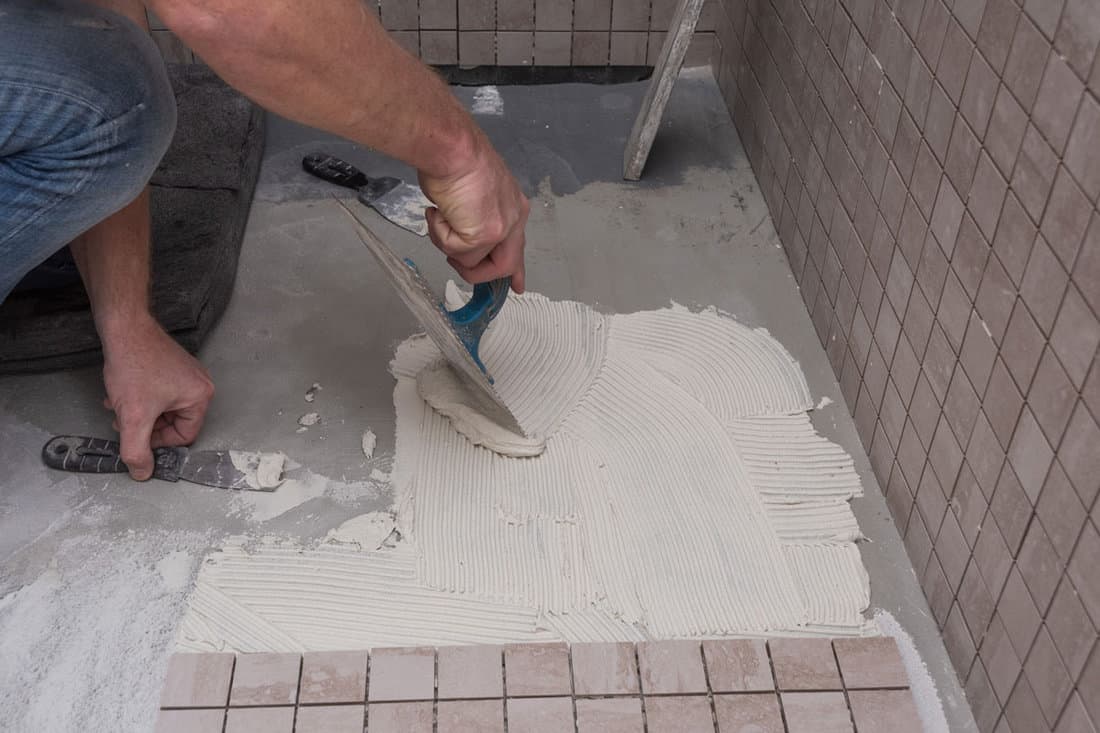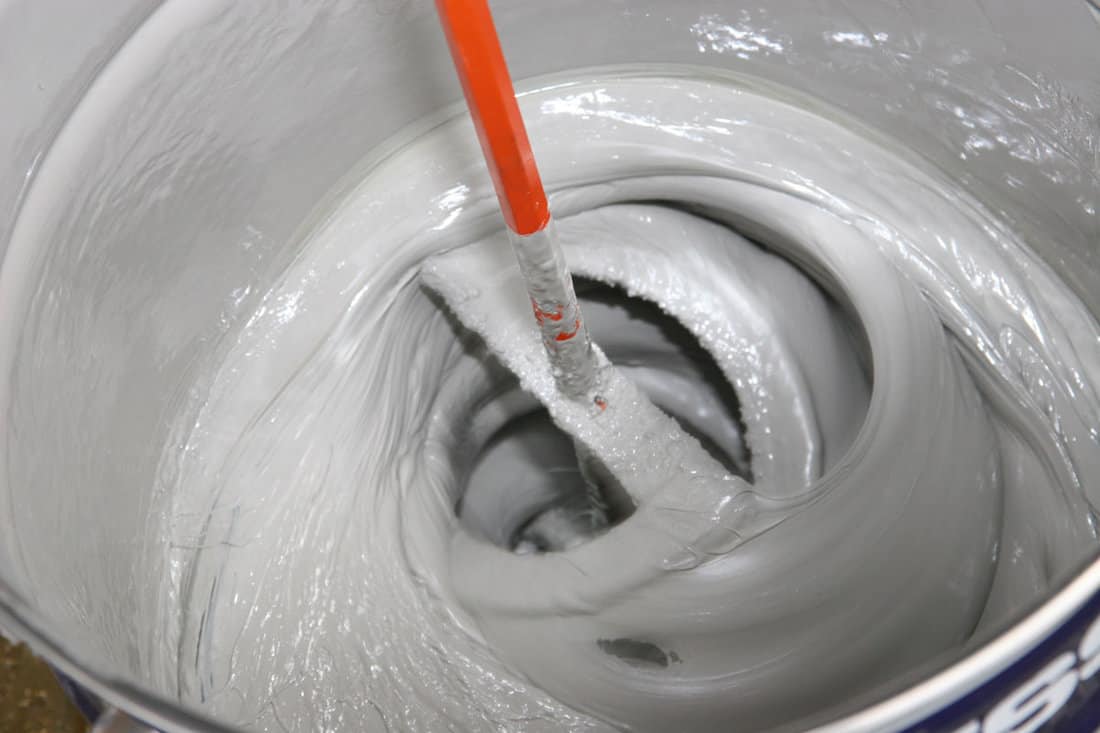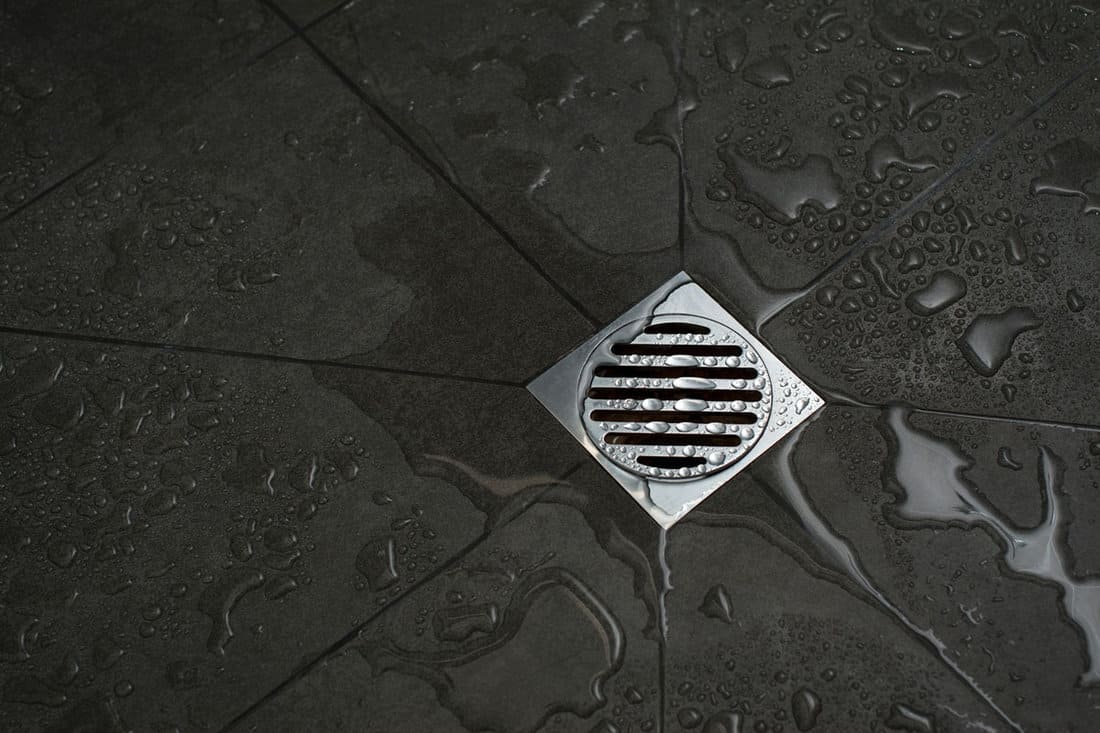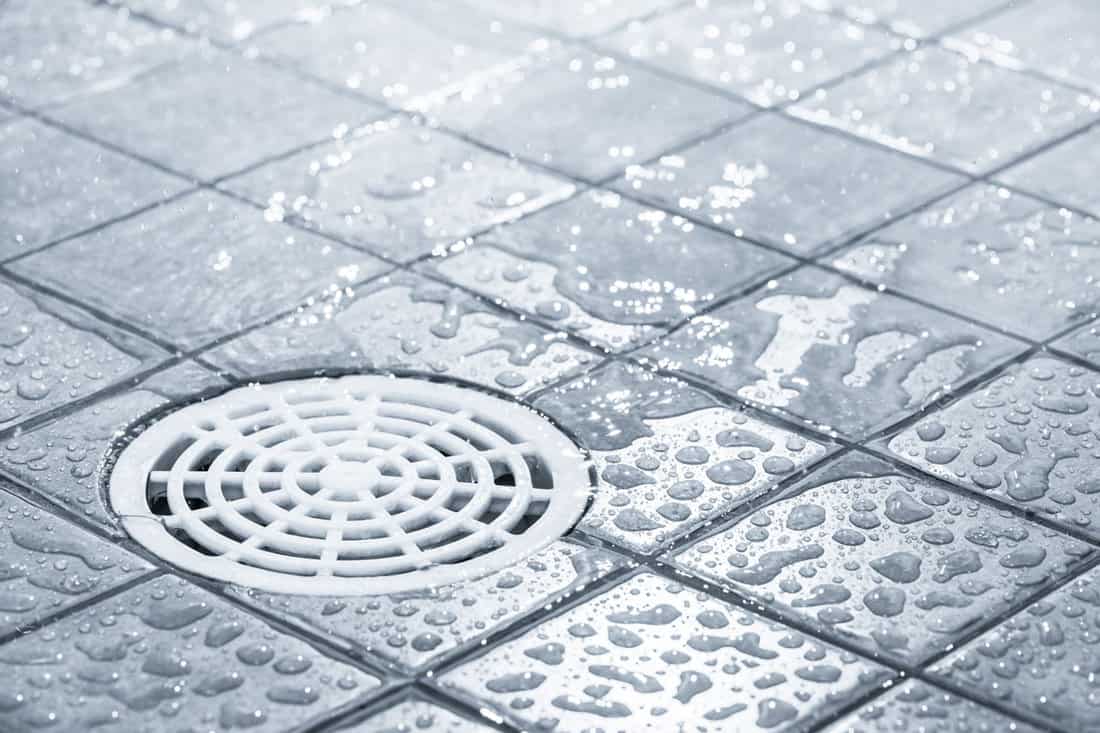Because of its well-known strong adhesive characteristics, epoxy is a substance that may be employed in a wide range of sectors. The product's chemical and heat resistance makes it ideal for a shower floor.
It is also suitable for anyone looking for a grip when things are tight. On a shower floor, though, how would epoxy perform? To give you reliable information, we conducted in-depth research.
Epoxy can be used as a grout for tiling, sealant, and decoration. This is a stylish and reliable way to complete a shower floor. It's perhaps the most valued and adored substance utilized in a bathroom, especially when a steam shower is present.
The shower floor will acquire a durable covering that is water-resistant, safe, and easy to maintain while enduring for years when epoxy is used as a finish. Epoxy is an excellent solution for both new tile installation and grout restoration. Continue reading to learn more!
![floor-drain-running-water-shower-tinted, Yes! You Can Epoxy A Shower Floor [Here's How]](https://homedecorbliss.com/wp-content/uploads/2022/10/Yes-You-Can-Epoxy-A-Shower-Floor-Heres-How.jpg)
How Can Epoxy Be Used For A Shower Floor
For shower flooring, epoxy is a great choice. It is not only dependable but also incredibly adaptable. Epoxy finishes are resilient as well as pleasant and hygienic. Grout work and finishing can be done with epoxy.
Grout
In contrast to conventional cement grout, an epoxy is a smart option for your shower floor when utilized as grout. This material possesses great waterproof, toughness, and anti-staining qualities.
It is a non-porous resin protectant with anti-corrosive properties and is resistant to fungus and bacteria, urine, and powerful cleaners.
Thanks to epoxy grout's dependability, your bathroom's tiled floor won't fracture, turn discolored, or even shrink. A shower floor with epoxy grout adheres to the tile very well and restores broken, damaged, or deteriorating grout.
Epoxy grout has application issues, though. As advised by experts, the application should be made gradually. Epoxy tends to cure more quickly than cement-specific bathrooms; the floor, the walls, or perhaps both may have tile grout.
Even though it experiences tears, with great maintenance, it should endure for 15-20 years.
The lifespan will substantially shorten if proper care is not done, such as cleaning and sealing.
Sealant
The anti-corrosive and sealant properties of epoxy flooring shield the shower from potential water damage. The soft epoxy solidifies when the resin hardener is applied.
Furthermore, the epoxy takes a week to firm up after being applied to the shower floor and creates the seal that every shower deserves.
The area can be waterproofed and sealed after seven days or more of the epoxy coating's drying phase.
Check out this resin and hardener on Amazon.
Decoration
Popular among at-home design companies are bathroom decorating ideas that are simple to apply and flexible. Today's top epoxy resin producers offer a broad color palette for shower walls and flooring.
Epoxy is a versatile and popular material that can be applied to a wide range of surfaces, including those constructed of stone or concrete, metallic treatments in opulent coppers and golds, or striking statement colors.
Can You Expoxy Over Shower Tile?

Basically, yes, epoxy can be applied to shower tiles. A light coat might offer added defense.
Tiles beneath the epoxy coating could cause damage because it doesn't yield much, especially in an area where the temperature can change quickly and when tiles are kept together by grout.
If you want to use epoxy with tile, it is advisable to reserve it for the caulk rather than coating the tile entirely.
Alternatively, you can use epoxy to cover the grout lines in showers that have already been tiled, giving your shower stall a fresh coat of color and more security. Using epoxy directly on your tiles is not advised.
Does Epoxy Work Over Bathroom Tile?
Bathrooms are fantastic places to use epoxy.
It is excellent for the atmosphere a hot shower generates because it is heat-and moisture-resistant. The impenetrable barrier that epoxy creates against bacteria and moisture makes it perfect for grout lines.
Precautions should be taken to guarantee the project's success; once the installation is complete, epoxy. Epoxy is hard to complete without harming the tile beneath. Once it's done, it's there to stay.
Therefore, before embarking on this project, ensure that the color fits your preferences. Consider a skilled installer if you're not sure if epoxy flooring would be the best option for your bathroom.
They offer installation services and guide you on the most appropriate flooring for your bathroom.
Epoxy flooring for public restrooms is among the greatest examples. Regardless of the wet or busy floors, epoxy floors can handle public restrooms and the continual foot traffic.
How Do You Apply Expoxy To Bathroom Tiles?

Be reminded that it's better to avoid using epoxy straight onto bathroom tiles. On the grout lines, though, you can use it. Here are the steps for applying the grout:
Prep
Ensure that you schedule your task in warm air temperatures. Expoxy doesn't respond well to colder weather, so you need to work in the heat.
These sponges, vinegar, trowels, epoxy grout, and scraping tools. The shower should be tidy and dry.
Blend The Grout
Two components make up epoxy. When mixing and getting ready your grout, read the instructions; the epoxy will be spreadable after mixing.
Putting Down Grout
Keep a damp sponge nearby and ready to use. Start by applying the grout to a small section of the tiles. To make your grout lines fine, you have to use scraping tools.
Scrape the extra grout off the tile area immediately with the damp sponge, kept only within the grout lines. If you can get someone to help, you can complete this task more quickly.
There will probably be some grout left on the tile. Removing the haze is where the role of vinegar comes in. Use a solution of water and vinegar. Don't get discouraged if it fails to succeed the first time.
It may need to be tried multiple times.
Check out this tile trowel on Amazon.
Application Again
Until the whole area is finished, apply the epoxy finish in small chunks over the tiles and grout lines.
After soaking, you can remove any errors or grout fragments you miss.
Pre-Use Care
Always read the instructions on the epoxy resin. Typically, it takes around seven days for curing and fully become waterproof. Do not destroy your hard work by acting too fast.
Can You Slip On Epoxy Floors?

Epoxy floors are flawless and glossy because they are manufactured from a combination of resin. However, due to their dazzling appearance, epoxy flooring could appear slippery.
A slippery floor, though, is an epoxy floor. It is not slick if it is dry.
Slips and falls can be tough, with some varieties, such as flake epoxy floors. Unfortunately, epoxy flooring can become extremely slippery if wet, especially on high gloss flooring.
Luckily, this element doesn't pose a problem, while others might. A carport or porch, for instance, will not be a problem. Unfortunately, epoxy flooring in bathrooms will likely be slippery.
How Can I Make Epoxy Floors Less Slippery?
Thankfully, there are numerous solutions to lessen epoxy flooring's slipperiness.
These solutions can only be applied in areas where epoxy flooring could frequently come into contact with water or other liquids.
Silica
Silica can be added to epoxy flooring to increase surface grip and reduce slipping hazards. The drawback of this solution is that epoxy loses some of its gloss over time.
Aluminum Oxide
Epoxy flooring surfaces can have aluminum oxide applied to provide a non-slip surface. It adheres nicely and doesn't alter epoxy's characteristics. The drawback is that this does make cleaning trickier.
Synthetic Rubber Mats
Get some artificial rubber floor mats. In areas where water collects, spread the mats. Water is absorbed by the carpets, preventing it from spreading throughout the epoxy floor.
The mat's anti-slip backings prevent it from sliding whenever you step on it, allowing you to move around without risk.
Check out this rubber mat on Amazon.
Carpet Runners
There may be a need to add several carpet runners if epoxy flooring is installed in a heavily used area. This can assist you in enhancing the general beauty of the space while also providing a slip-resistant surface.
See this bath carpet runner on Amazon.
To Wrap It All Up

In a shower floor, epoxy could be employed without a doubt. It can give something a little more character and sturdiness.
When attempting any significant alterations to your home, take your preferences carefully, as well as the interests of your companions. Epoxy can be tricky to remove and be rather slippery when wet.
Made it to the end? Check out these helpful related articles below:
How To Fill Gaps Between Tiles [Using Grout, Caulk, Gap Filling Powder, Or White Cement]





good article. its helped. tell more about resin flooring